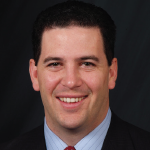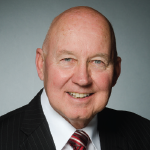
Mumemories / shutterstock.com
Missed appointments have long been a problem for rheumatology practices. A recent poll from the Medical Group Management Association (MGMA) found no-shows were the single biggest challenge reported by practice leaders, with 44% of respondents citing the issue.1
If a patient does not come to the office when scheduled, it starts a cascade of events with impacts on the patient, the practice, other patients and even the healthcare system as a whole. One issue is the financial impact on the practice. As with airlines, when the time of the appointment (or flight) passes, there is no way to recoup those financial losses.
No Shows & Practice Income
“I see around 30 people a day, and if 10% do not arrive, that is three slots a day that aren’t producing revenue,” says Adam J. Grunbaum, DO, FACOL, FACR, physician/owner of Gulf Coast Rheumatology PLLC, Trinity, Fla. “It never seems to be a big deal that day. But three a day is 60 patients missed over 20 working days a month, and it adds up.”

Dr. Grunbaum
David N. Gans, MSHA, FACMPE, senior fellow, industry affairs at MGMA Consulting in Englewood, Colo., notes an MGMA report on physician-owned, single-specialty, medical subspecialty practices showed collections per medical procedure of around $87.34. That would mean around $5,240 in revenue is lost per month. With an 11-month year (accounting for vacation, sick days, holidays, etc.), revenue foregone runs around $57,650. This is a per physician estimate, so the impact on groups is even higher.
There are also potential liability concerns. Missed appointments without follow-up could put a physician at risk for negligence if the patient gets worse, putting their health at risk. Other possible exposures would include a delay or even failure to diagnose.
Risk to Other Patients

Mr. Gans
Other patients can be put at risk if a practice’s no-show rate is high.
“We have plenty of patients who want to be seen, but we don’t have the slots available,” says Angie Boling, office manager for Medical Specialists, Johnson City, Tenn. “There is already a six-month waiting time for new patients. Not only do we suffer as a business when people don’t show up, but patients suffer medically because we can’t work our list of patients who want early appointments.”
One acute care hospital system looked at no-show rates following implementation of a new electronic medical records (EMR) system. It improved the number of people missing appointments. The hospital’s next available appointment average went from 100 days to 55 days.2
Define the Problem
The first step to address no-shows is to define the extent of the problem. Start with your appointment calendar. Most computer scheduling programs indicate if the person made it to the appointment at the correct time.
“What we see among practices of all kinds is a missed appointment rate around 6%,” says Mr. Gans. “That is the baseline that a practice should be aiming for. We also suggest keeping close track over time and addressing any rises.”
Look closely at both the when and the why. Ms. Boling notes the majority of those who don’t arrive are scheduled on a Monday or Tuesday morning. Others have noticed that the further out the appointment is made, the more likely the patient is to not show up. When possible, ask the patient on the next visit why they couldn’t come.
After fact finding, what you do next will depend on what you learn. Look at things the practice can do to keep no-shows to a minimum.
Communicate
However you decide to handle no-shows, make sure the patient knows and understands written policies you have in place. If there are consequences, such as fees, communicate that and when payment is expected. Talk about the need to cancel no later than 24–72 hours before. Discuss when they may be dismissed from the practice for missed appointments.
Another way to reduce no-shows is to stay on schedule. Both practice managers and providers need to ensure the practitioner is available when the patient arrives. Patients often view a practitioner’s habitual late arrival as a lack of respect for their time and may be less concerned about your time when the practitioner is running late for a reason. They also may adjust the time of their arrival from what’s on the appointment card to what they view as the real appointment time based on their experience.
Know Provider Habits
All providers have their own ways of caring for patients. Some take longer than others, so a one-size-fits-all scheduling system may not work. Management and partners may have to address issues around some physicians doing less work than others if practice patterns mean they see a patient or two less to stay on time.
Managing expectations is important. This is where good scheduling and reception staff can be invaluable.
Staff—an Important Aspect
“The MGMA recommends every practice train its staff on consumer service and handling of disruptive patients,” says Mr. Gans. “Talking with many practice administrators, I have found that training has substantial payoffs for the practice. You have to commit time and effort to make sure your staff is doing the right thing consistently.”
Know your patients. The responses to no-shows from a practice that largely sees people with their own transportation may be very different from one whose patients get there using one (or more) buses. This will also have an impact on communications. Can you use text messaging or phone calls, or is regular mail the only way to consistently make contact?
Ways to Cut Missed Appointments
One of the best ways to cut down on missed appointments, according to the experts, is to send out reminders. Ms. Boling’s group calls patients 48 hours before they are scheduled. Due to the long wait times, they also send a new patient letter two weeks or so in advance.
“On those rare occasions when our phone system goes down, I can tell the difference,” she says. “Our patients rely on that phone call. I would estimate a doubling of the no-show rate if we don’t call them.”
The most efficient way to contact patients should be tracked. Work to match the preferred method of communication to the patient. Some may like calls, others text, email or your patient portal. When possible, give patients an opportunity to confirm or cancel an appointment easily. If they cancel, make sure your system notifies someone to reset the appointment.
Fees for Missed Appointments
Fees for missed appointments are controversial. Dr. Grunbaum has seen them be useful and has seen little negative feedback by using common sense. Although the MGMA doesn’t have an official stand on the issue, Mr. Gans thinks all they do is “tick people off.”
Some practices charge the entire reimbursable amount. Most put the fee at $25–50. This is enough to get a patient’s attention, but not enough that patients feel they are being punished. This amount often coincides with the patient’s copay.
“For me this is the fee that works,” says Dr. Grunbaum. “It eliminated 95% of my missed appointments, and although each practice is different, the goal needs to be reducing no-shows.”
Some practices waive the fee for the first missed appointment. The patient is reminded of the fee and told it will be imposed the next time. Collection of the fee varies, with some sending out a bill and others relying on payment at the next visit.
‘Since Monday & Tuesday mornings have the most missed appointments, these are the days we are considering overbooking,’ says Ms. Boling.
Overbooking
Overbooking is another possible response. This means an additional appointment is made available on the schedule. It also means the practice walks a tightrope. Add too many slots, and the providers run even further behind. Add too few, and you are still losing revenue.
“Since Monday and Tuesday mornings have the most missed appointments, these are the days we are considering overbooking,” says Ms. Boling. “We could add one additional slot in the morning. This fills the needs, but doesn’t put an undo burden on either provider or patients.”
Because few of its new patients miss an appointment, largely because they don’t want to go to the back of the multi-month waiting list, Ms. Boling’s group doesn’t overbook first visit slots. Also, it doesn’t overbook their nurse practitioners, reserving them for same-day appointments for a sudden flair or other complaint.
Computerization of scheduling has made it easier to start and maintain waiting lists. When last-minute cancelations or no-shows occur, people on the list are contacted until the spot is filled.
Discharge Final Option
The final option is discharging the patient from the practice. Those interviewed all agree this is used only after multiple missed appointments and specific and ongoing follow-up communications.
“This is a very stern measure, but it acknowledges the patient has a shared responsibility,” says Mr. Gans. “Avoiding discharge really starts at the first visit, informing the patient specifically and face to face about these policies.”
The general consensus is that a contact is made after the first no-show, asking the patient to get in touch and reschedule. The second puts them on probation, and they are told three could result in being discharged. If another appointment is missed, then the attending physician is contacted, and they make the termination decision.
“Rheumatologists typically spend a lot of time with each patient to provide the proper quality of care,” says Dr. Grunbaum. “Creating a system that helps reduce missed appointments is a win-win for everyone, especially those who don’t want to wait a long time to see me.”
Kurt Ullman has been a contributing writer to The Rheumatologist for 10 years.
Missed Appointments Viewed as Access Problem

Dr. Dickinson
The Sentara Medical Group in Virginia has taken a different tack for its no-show problems.
“We have worked on missed appointment concerns in the setting of access,” says Daniel J. Dickinson, MD, MPH, medical director for clinical integration and clinical chief of internal medicine. “We have learned these two are closely related, and if you provide good access, your no-shows go down. We take some of the blame for missed appointments from the patient and put it on us.”
The practice started by working on the culture so staff knew access was important. Specialized training was delivered at all levels to not only impart that access was the focus, but why it received a high priority.
“Specific scripts were written, and staff were trained on using them,” says Dr. Dickinson. “When a patient called, the first question was when they would like to be seen. We captured demand and found what patient preferences were.”
Armed with that information, the managers looked at the practice’s scheduling templates. The survey indicated a large number of people wanted to be seen in two weeks or less, while others were happy to wait a month. Reserving half of the slots and opening them up 14 days prior to the appointment allowed the practice to match both demand streams.
The practice is proactive in patient communications. Even when access is addressed, one of the drivers of missed appointments is patient forgetfulness.
“By changing the culture, scripting and demand-capacity matching, our patient perception of access went up, and our no-show rates went down,” says Dr. Dickinson. “When we started, access to our rheumatology practice was below average. Now, it is now in the top quartile, and we aim for the top 10%.”
References
- Harrop C. Data insights: Practice leaders report their biggest challenges with appointments are no-shows and appointment availability. Medical Group Management Association. 2017 Oct.
- Studer Group, Prachyl D. 7 ways to improve access and reduce no-shows. Hardwired Results. 2014 winter;(14).


